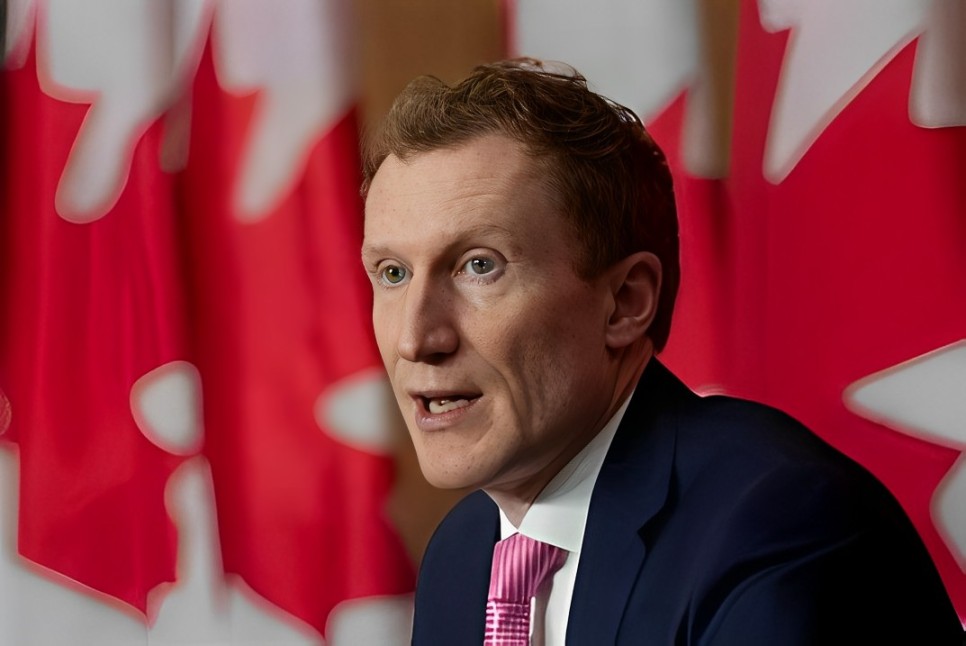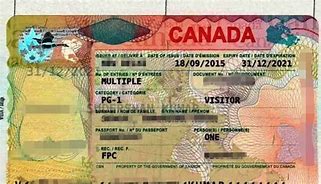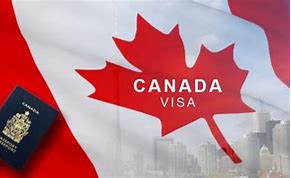The Canadian government is making significant adjustments to its immigration targets in response to mounting challenges in housing affordability, infrastructure capacity, and social services. Starting next year, the federal government will reduce its permanent resident targets from 500,000 to 395,000, with further reductions planned for 2026 and 2027. Similarly, the number of temporary residents will be scaled down over the next three years, decreasing their population proportion from 7% to 5%. This shift follows growing criticism that rapid population growth is straining Canada’s housing market, healthcare systems, and affordability. Prime Minister Justin Trudeau acknowledged that post-pandemic immigration policies, which were initially designed to meet labor shortages and stave off economic recession, may have inadvertently fueled current challenges. Immigration Minister Mark Miller emphasized that these reductions aim to provide more controlled, managed growth while maintaining Canada’s economic stability. Balancing Growth with Affordability The government asserts that the adjustments address Canadian concerns about affordability without undermining the importance of immigration. Minister Miller explained that immigration has historically supported economic growth by offsetting the effects of an aging workforce and boosting the labor market. However, he acknowledged that unchecked growth has also contributed to affordability issues, such as increased housing demand and rising rents. Recent measures, including capping international student visas, have already reduced rent prices in cities like Vancouver and Toronto by 8-10%. Despite these reductions, Miller assured Canadians that businesses and provinces could adapt by leveraging domestic labor more effectively. He emphasized the need for collaboration among federal, provincial, and territorial governments to better manage immigration and housing development. Security Measures and Screening Improvements In light of recent incidents highlighting potential flaws in immigration screening processes, the government has reiterated its commitment to strengthening security measures. Minister Miller cited advancements in biometric technology as a key step in ensuring Canada remains a safe and secure destination for immigrants. Addressing Public Concerns Miller also addressed broader concerns about housing shortages and affordability. Former housing targets aimed to deliver 3.78 million homes by 2031, but with fewer immigrants, the pressure to meet this ambitious goal is expected to ease. Minister Miller noted that this reduction in immigration levels translates to 670,000 fewer housing units needed by 2027, a significant adjustment that could help stabilize housing prices. Implications for Immigration Agencies At Worldbridge Immigration, these changes will not affect our commitment to helping individuals find suitable pathways to Canada. While targets for permanent and temporary residents are being adjusted, Canada’s immigration system remains robust and open to high-skilled and high-net-worth applicants. We continue to provide expert guidance to ensure our clients can navigate the evolving immigration landscape successfully. For those seeking clarity on how these changes may affect their plans, our team is ready to assist. Canada’s commitment to welcoming immigrants and fostering diversity remains steadfast, and we are here to help you achieve your immigration goals. Let Worldbridge Immigration Services be your guide to a successful future in Canada Contact us: Website: www.theworldbridge.ca Email: info@theworldbridge.ca Phone/WhatsApp: +1-416-727-7766 Social Media: @worldbridgeHQ
Understanding Refugees, Migrants, Asylum Seekers, and Immigrants
The terms migrant, refugee, asylum seeker, and immigrant are often used interchangeably, but they refer to different experiences and legal statuses. Understanding these distinctions is essential to appreciating the unique circumstances and challenges faced by each group. Migrants A migrant is someone who moves from one country to another, typically in search of better opportunities. This could be for work, education, or an improved quality of life. Migration can be voluntary or driven by necessity, but it does not always involve legal residency. Immigrants Immigrants are individuals who have moved to another country and established residency, either through legal processes or undocumented means. Unlike migrants, immigrants often have a long-term commitment to settling in their new country, which may involve family reunification, job opportunities, or other motivations. Refugees Refugees are people who flee their home countries due to a well-founded fear of persecution based on factors such as race, religion, political opinion, or membership in a specific social group. Refugees must apply for protection from outside the destination country, often through international organizations like the United Nations. They undergo a rigorous vetting process before being granted permission to resettle. Asylum Seekers Asylum seekers, like refugees, are individuals seeking protection due to persecution. However, they differ in that they are already present in the destination country or at its border when they apply for protection. Under U.S. law, asylum seekers must file their application within one year of entering the country. The Road to Legal Status Regardless of the category, obtaining legal status in a new country is often a lengthy and complex process. For migrants, refugees, and asylum seekers, it can take years of navigating legal systems, interviews, and background checks before achieving stability in their new lives. These distinctions are more than just semantics—they reflect the diverse reasons people move across borders and the unique legal frameworks that govern their status. Each group faces challenges that require tailored policies and support to ensure their safety, dignity, and opportunity for a better future. Let Worldbridge Immigration Services be your guide to a successful future in Canada Contact us: Website: www.theworldbridge.ca Email: info@theworldbridge.ca Phone/WhatsApp: +1-416-727-7766 Social Media: @worldbridgeHQ
Benefits of seeking asylum in Canada
Seeking asylum in Canada offers several benefits that make it a popular choice for those in need of protection. Here are some key advantages: 1. Protection from Deportation: Once you apply for asylum, you cannot be deported back to a country where you may face persecution. Even if you don’t have a visa or official entry permit, Canada ensures that your case is heard before a decision is made. In certain cases, Canada may not deport individuals to countries it deems unsafe. 2. Non-penalization for Irregular Entry: If you enter Canada without the proper documentation, you will not face penalties as long as you declare your intention to seek asylum. This protection allows individuals to safely apply for asylum without fear of immediate deportation. 3. Legal and Social Protections: Asylum seekers in Canada are protected by the Universal Declaration of Human Rights, which recognizes the right to seek asylum. Canada also offers shelters for those in need, where their safety is prioritized, and they are provided with basic necessities. 4. Access to Social Services: Asylum seekers in Canada can access services like healthcare through the Interim Federal Health Program, legal aid, and social assistance programs in some provinces. They also have the right to open a bank account and access banking services, which is essential for settling in the country. 5. Work and Education: Asylum seekers have the right to work and can apply for a work permit. Children under 18 are eligible for free education, and adults can pursue studies with a valid study permit. For those interested in further education, Canada offers free or subsidized courses in various trades. 6. Freedom of Movement: Asylum seekers can move freely within Canada and reside in any province. They are not restricted to the province where they applied, though they must inform their caseworker and keep them updated on their whereabouts. 7. Social Assistance: Depending on the province, asylum seekers may be eligible for financial support to help with basic needs, including accommodation, food, and transport. Canada offers an environment of safety, support, and opportunity for asylum seekers, which is why it has become a top destination for those in search of refuge. Let Worldbridge Immigration Services be your guide to a successful future in Canada Contact us: Website: www.theworldbridge.ca Email: info@theworldbridge.ca Phone/WhatsApp: +1-416-727-7766 Social Media: @worldbridgeHQ
Canada’s Immigration Overhaul: What You Need to Know About Minister Mark Miller’s Recent Announcement
Recent developments in Canada’s immigration policies are creating a stir, particularly regarding the treatment of refugees and asylum seekers. Immigration Minister Mark Miller has made significant statements that are expected to bring changes to Canada’s refugee and asylum process. Here’s an in-depth look at the situation and the possible impacts on current and future applicants. Lengthy Delays in Refugee Claims Processing One of the most concerning updates is the dramatic increase in processing times for refugee claims. According to the latest figures, processing now takes up to 44 months—a staggering 3.6 years—due to the growing number of claims. As of the most recent data, over 200,000 claims are pending, with many applicants now facing extended stays in Canada while their cases are reviewed. This increase in waiting times has raised alarm among both refugees and policymakers, as people can remain in Canada with work permits and access to healthcare during this prolonged period. The number of new refugee claims has surged this year, with 70% of the total claims being submitted in 2024 alone. This influx has placed a significant strain on Canada’s immigration system, prompting the government to re-evaluate its policies. Many critics are concerned about the impact of such delays on Canadian resources and the perceived abuse of the asylum process. Government’s Stance on Misuse of Temporary Visas Minister Miller has also spoken out about the increasing trend of individuals entering Canada on visitor visas or student permits and later applying for asylum. This practice has raised concerns about potential misuse of Canada’s immigration system. Many temporary residents are reportedly exploiting these visas as a backdoor entry into permanent residency, a situation that the government is now aiming to address. Miller emphasized that temporary status—whether as a student, visitor, or worker—should not automatically lead to permanent residency or citizenship. The government’s stance is clear: coming to Canada on a temporary visa does not entitle an individual to stay indefinitely or become a permanent resident. This marks a shift in how the government views the rights of foreign nationals in Canada, signaling stricter policies in the near future. Stricter Enforcement and Deportations In line with these new policies, Canada is preparing for significant deportations in the coming years. It is estimated that by 2025, up to 1.2 million temporary residents may be forced to leave the country, as their visas expire or are terminated. This includes individuals on student visas, work permits, and other temporary statuses who fail to meet the requirements for permanent residency. Canada is also looking at expanding its deportation efforts in response to the increasing number of people who overstay their visas or misuse the asylum process. Asylum claims from individuals who initially entered Canada under temporary status are now being scrutinized more carefully, with the government signaling that it will not hesitate to deport those whose claims are deemed fraudulent or unsubstantiated. The Growing Role of Asylum Seekers and Refugee Healthcare The surge in refugee claims has led to significant debate about the resources allocated for refugee support. The Canadian government has requested $411 million in funding to cover healthcare costs for refugees, a sign of the growing pressure the system is under. Critics argue that while refugee healthcare is important, the government should prioritize the needs of Canadian citizens as well, particularly those struggling with the cost of living. As the number of new arrivals increases, there are growing concerns over whether Canada’s immigration system can handle the strain without compromising the wellbeing of existing residents. The debate has intensified, with some accusing the government of being too focused on newcomers while neglecting the needs of those already living in Canada. Challenges for Asylum Seekers from Specific Countries The situation is particularly difficult for those coming from countries with high numbers of asylum seekers, such as Sri Lanka. Recent reports suggest that individuals from Sri Lanka are increasingly applying for asylum after entering Canada as students or visitors, only to face challenges due to insufficient evidence to support their claims. In these cases, the lack of documentation has made it difficult for many to establish a legitimate need for refuge, leading to higher rates of rejection. Minister Miller’s statements indicate that applicants with weak cases will likely face rejection and deportation, underscoring the government’s intent to crack down on what they perceive as fake asylum claims. This has made it more challenging for individuals from countries with political unrest or economic turmoil to successfully navigate the asylum process. Looking Ahead: The Future of Canada’s Immigration System With the increasing pressure on Canada’s immigration system, significant changes are on the horizon. The government’s latest measures indicate a move towards more stringent regulations, aimed at curbing abuse and ensuring that only those who truly need protection can stay. However, these changes also carry the risk of making it harder for legitimate refugees to enter and remain in Canada. By 2025, Canada plans to implement stricter controls on immigration and work permits, reducing the number of temporary residents and increasing deportations. Those entering Canada with temporary visas should be aware that their chances of obtaining permanent residency are now slimmer than before. Immigration Minister Mark Miller has made it clear that the government will not tolerate misuse of the system, and those who enter Canada temporarily should not assume they will be granted the right to stay permanently. Conclusion: A Time of Uncertainty for Immigrants Canada is undergoing significant changes in its immigration and asylum policies, with long-term implications for refugees, temporary residents, and those seeking permanent residency. The government’s focus on reducing fraudulent asylum claims and tightening visa controls will undoubtedly impact many individuals hoping to start a new life in Canada. For those considering applying for asylum, it is crucial to be aware of the evolving landscape and ensure they have the proper documentation and legal support to navigate the process. As these changes unfold, it will be important for potential immigrants to stay informed and consult with immigration professionals to understand the
Major Reforms to the LMIA and Temporary Foreign Worker Program: What Employers and Workers Need to Know
Canada’s Temporary Foreign Worker Program (TFWP) and the Labour Market Impact Assessment (LMIA) process are undergoing significant changes that will impact both employers and foreign workers. These reforms, aimed at addressing ongoing labor shortages, improving wage fairness, and enhancing protections for foreign workers, introduce new requirements that businesses must navigate carefully. Key Changes to the LMIA Process As of November 8, 2023, the Canadian government has implemented several notable changes to the LMIA process, including stricter wage requirements and the removal of third-party attestations. These changes apply to both high-wage and low-wage LMIA applications, affecting businesses across a variety of sectors, especially those reliant on foreign workers. 1. Increased Median Wage Requirement for High-Wage LMIAs One of the most significant changes is the 20% increase in the median wage threshold for high-wage LMIA applications. This adjustment aims to ensure that foreign workers are paid in alignment with prevailing market wages, promoting fair compensation. However, this increase could result in higher costs for employers, especially in industries where wages are already competitive or where businesses are struggling with labor shortages. For employers seeking to hire foreign workers for high-wage positions, it is now essential to assess whether they can meet these new wage thresholds before submitting an LMIA application. The increase will likely have the most impact on businesses in sectors with already high salary levels or where recruitment is particularly challenging. 2. Elimination of Third-Party Attestations In the past, companies with limited financial records could submit an attestation from a lawyer, certified public accountant (CPA), or other professionals to demonstrate their financial capacity to pay foreign workers’ wages. This was especially helpful for small businesses or startups that might not have extensive financial statements. Under the new rules, employers are no longer able to rely on third-party attestations. Instead, they must provide direct evidence of their financial viability through detailed financial statements. This change increases the burden on businesses, particularly small and medium-sized enterprises (SMEs), which may not have the financial documentation required to meet the new standards. Implications for Employers and the Labour Market These reforms aim to create a more transparent and accountable LMIA process, with a particular focus on protecting foreign workers and ensuring fair wages. However, they also introduce new challenges for employers. 1. Higher Costs for Employers The increase in wage requirements and the elimination of third-party attestations could create significant financial pressures for employers, particularly those in industries with tight margins or small businesses that rely on affordable foreign labor. These changes could make it more difficult for employers to fill positions, particularly in sectors experiencing labor shortages. 2. Challenges for Small and Medium-Sized Enterprises Small and medium-sized enterprises, often operating with limited resources, may find it particularly difficult to comply with the new requirements. Many SMEs rely on the flexibility provided by the third-party attestation system to demonstrate their ability to hire foreign workers. The removal of this option could prevent some businesses from hiring the talent they need to grow and compete. 3. Impact on Labour-Intensive Industries Certain labor-intensive sectors, such as agriculture, hospitality, and construction, may be hit hardest by these reforms. These industries typically rely on foreign workers to fill essential roles, but higher wage thresholds and the need to provide detailed financial statements could make it more difficult for employers to access this workforce. Addressing Fraud Concerns The reforms also address concerns around fraud within the LMIA process. By tightening the requirements for wage levels and financial documentation, the government aims to ensure that only financially stable and compliant employers are able to hire foreign workers. While these changes may reduce the potential for fraud, there is some concern that they could inadvertently penalize legitimate employers. Some worry that businesses, particularly those with limited resources or in sectors that already face high labor costs, may struggle to meet the new requirements, even if they are operating ethically. This could lead to unintended barriers for employers seeking to fill critical roles, despite their genuine need for foreign workers. Potential Outcomes: Balancing Protection with Business Needs The ultimate question surrounding these reforms is whether they will effectively reduce fraud and improve wage fairness, or if they will create new barriers for businesses struggling to meet labor demands. The increased wage requirements and stricter financial standards are certainly designed to protect foreign workers and ensure fair pay, but they also risk making it more difficult for employers to access the talent they need. For employers, adapting to these changes will require careful financial planning, particularly for SMEs and businesses in high-labor-cost sectors. Additionally, businesses must be prepared to demonstrate their financial viability without the aid of third-party attestations, ensuring their financial documentation is in line with the new requirements. Conclusion: Navigating the New Landscape Canada’s LMIA reforms mark a major shift in how the Temporary Foreign Worker Program operates, with a focus on fairness, transparency, and wage alignment. While the changes are intended to protect foreign workers and ensure better compensation, they will require significant adjustments from employers, particularly those in small businesses or industries facing high labor costs. Employers and foreign workers alike must stay informed about the evolving requirements of the LMIA process and the Temporary Foreign Worker Program. As these reforms take effect, understanding the new rules will be crucial for businesses seeking to hire foreign talent and for foreign workers hoping to come to Canada to contribute to the workforce. By staying up to date with these changes, employers can continue to navigate the complexities of the LMIA process while contributing to Canada’s diverse and growing labor market. Let Worldbridge Immigration Services be your guide to a successful future in Canada Contact us: Website: www.theworldbridge.ca Email: info@theworldbridge.ca Phone/WhatsApp: +1-416-727-7766 Social Media: @worldbridgeHQ
Canada’s Changing Immigration Strategy: Balancing Growth and Sustainability
Over the past two years, Canada has experienced a rapid population increase, reminiscent of a post-war baby boom. This surge, however, has revealed some challenges in the immigration system, particularly concerning the exploitation of pathways like temporary foreign workers and international students by certain institutions and businesses. In response, the Canadian government is recalibrating its immigration strategy, making adjustments aimed at balancing economic growth with social and infrastructural stability. The Two Faces of Immigration Canada’s immigration framework is traditionally divided into two categories: permanent and temporary residents. Permanent immigration refers to individuals and families who come to Canada to settle long-term, often with the goal of becoming citizens. Temporary immigration, on the other hand, includes workers and students who come to Canada for a defined period, either to work or study. While many temporary residents eventually return to their home countries, others apply to transition into permanent residency. For decades, the Canadian immigration system focused primarily on permanent immigration, with temporary immigration being largely dictated by market demand. However, the post-pandemic economic recovery has highlighted the growing importance of temporary residents, particularly temporary foreign workers, in filling labor shortages across the country. The Economic Imperative Following the pandemic, Canada’s economy rebounded quickly, necessitating an influx of workers to address labor shortages that had been exacerbated by the closure of borders. Sectors ranging from hospitality to manufacturing urgently needed workers, and temporary foreign workers played a critical role in this recovery. The influx of labor supported the reopening of businesses, helped mitigate recessionary risks, and fueled the country’s economic growth. Despite these successes, the expansion of temporary immigration has also led to unintended consequences. Some businesses, colleges, and other entities have been accused of exploiting the system for financial gain, often at the expense of vulnerable newcomers. Reports of “diploma mills” churning out degrees without proper oversight and exploitative recruitment practices by unscrupulous employers have sparked concern. Adjusting Immigration Levels To address these challenges, Canada is taking decisive action. For the first time, the government has developed an immigration plan that includes both permanent and temporary residents, with clear targets for each category. This change reflects the growing role that temporary residents now play in the workforce and the recognition that they need to be integrated into long-term planning. In the coming years, Canada will reduce the overall number of immigrants entering the country, both permanent and temporary. Permanent immigration levels will be reduced by at least 20%, with a focus on attracting skilled workers in sectors such as healthcare and construction, where the country is facing significant workforce gaps. Temporary immigration will also be scaled back, particularly in the international student and temporary foreign worker categories. While some temporary residents may transition to permanent residency, others will be required to leave once their temporary visas expire. This approach is intended to stabilize population growth and provide communities with the time needed to catch up with the growing demand for housing, healthcare, and other infrastructure. Focusing on Sustainable Growth This shift in immigration policy will enable Canada to focus on long-term sustainability. The government recognizes that population growth must be in harmony with the nation’s ability to provide essential services and infrastructure. The immigration pause over the next two years will give time for important projects, such as the construction of millions of new homes, to progress. This slowdown will help alleviate some of the pressure on Canadian cities, where skyrocketing rental prices and overcrowded housing markets have become a major concern. With fewer people entering the country in the short term, Canadian businesses will also be encouraged to invest in domestic labor, including youth and underrepresented groups. The focus will shift from relying on cheap foreign labor to fostering a stronger domestic workforce. As the cap on international students remains in place, the hope is that housing costs in major cities will continue to ease, benefiting both newcomers and established Canadians. A New Immigration Path Forward Canada’s immigration strategy is evolving to better serve both newcomers and the existing population. While immigration remains a cornerstone of the country’s growth and diversity, it must be carefully managed to ensure that the benefits are felt by all Canadians. The government is committed to ensuring that immigration policy works for the collective good—supporting the economy, building stronger communities, and providing newcomers with the opportunities they deserve. By adjusting immigration levels and focusing on strategic priorities, Canada is aiming to create a more balanced and sustainable immigration system—one that supports both its economic ambitions and the well-being of its citizens. Let Worldbridge Immigration Services be your guide to a successful future in Canada Contact us: Website: www.theworldbridge.ca Email: info@theworldbridge.ca Phone/WhatsApp: +1-416-727-7766 Social Media: @worldbridgeHQ
Understanding Canadian Immigration Processing Times: What You Need to Know
One of the most common questions potential immigrants to Canada ask is, “How long does it take for my application to be processed?” Here’s a detailed look at the factors that influence processing times and the approximate timelines for various Canadian immigration programs. What Are Canadian Immigration Processing Times? Processing time refers to the period Immigration, Refugees and Citizenship Canada (IRCC) takes to process an application—from the day it is received to the date a decision is made. However, this does not include the time spent preparing documents, submitting profiles, or waiting for visas or permits to be mailed. Factors Influencing Processing Times Several factors determine how long it takes for your application to be finalized: 1. Country of Residence Processing times can vary depending on where the applicant resides. Although applications are no longer strictly processed at the nearest visa office, IRCC may assign applications to specific offices based on efficiency. 2. Type of Application The nature of your application (e.g., work permit, permanent residency, study visa) significantly impacts the timeline. Higher volumes of applications in certain categories may also lead to delays. 3. Completeness of Application Incomplete submissions can result in delays, as IRCC may request additional information or reject the application outright. Estimated Processing Times by Program Below are general timelines based on recent IRCC data as of November 2023. Keep in mind that these are estimates and can change at any time. Express Entry This program includes categories such as Federal Skilled Worker (FSW), Federal Skilled Trades (FST), Canadian Experience Class (CEC), and some streams under the Provincial Nominee Program (PNP). Typical processing time: 6 months for 80% of applications. Note: The processing time excludes the period required for profile submission, receiving an Invitation to Apply (ITA), and preparing the final application. Study Permits Processing times for study permits vary depending on the applicant’s home country: Shortest time: Approximately 8 weeks. Longest time: Up to 17 weeks, especially near the start of an academic year due to increased applications. Post-Graduation Work Permit (PGWP) For graduates applying for a PGWP: Processing time: 134 days for both online and paper-based submissions. Permanent Resident (PR) Card New PR cards: Typically processed in 36 days. Renewals or replacements: Approximately 70 days. Spousal Sponsorship Standard processing time: Around 12 months. Applications may take longer if processed in Quebec, with timelines reaching up to 25 months. Visitor Visa Within Canada: Online or paper applications are processed in 10–27 days. Outside Canada: Processing times depend on the applicant’s home country. Other Considerations Processing times are subject to many variables, including changes in IRCC policies and global events. While the times above provide a general idea, applicants should frequently check IRCC’s official website for the most up-to-date information. Want to know more about moving to Canada? Contact us for guidance tailored to your unique circumstances. Let Worldbridge Immigration Services be your guide to a successful future in Canada Contact us: Website: www.theworldbridge.ca Email: info@theworldbridge.ca Phone/WhatsApp: +1-416-727-7766 Social Media: @worldbridgeHQ
INTERNATIONAL STUDENTS IN CANADA CAN WORK UP TO 24 HOURS PER WEEK OFF-CAMPUS
Effective November 15, Canada has implemented a significant change for international students, allowing them to work up to 24 hours per week off-campus while their classes are in session. This adjustment marks a notable increase from the previous limit of 20 hours per week, which many students and advocates had been requesting for years. This development raises a crucial question: is 24 hours of off-campus work per week sufficient for international students to meet their financial needs in Canada? Key Points of the Policy Change 1. Increased Off-Campus Work Limit The new limit provides an additional four hours per week compared to the previous policy. This change is designed to offer more financial flexibility to international students while ensuring that their primary focus remains on academics. 2. On-Campus and Break Periods International students are still allowed to work unlimited hours on-campus and during academic breaks. These periods provide additional opportunities for students to earn income and manage their expenses. also read – how to find a job in today’s Canadian job market Is 24 Hours Per Week Enough? Despite this change, many argue that the new limit may still not be sufficient to cover living expenses in Canada, especially given the country’s high cost of living. Housing, transportation, and other basic necessities vary by province, but minimum wage rates generally fall short of meeting these financial demands. For instance: Cost of Living: Housing costs in major cities like Toronto and Vancouver are notably high. Rising Expenses: Inflation and increased tuition fees have added further financial pressure on international students. The Bigger Picture It’s essential to remember that the primary purpose of studying in Canada as an international student is to pursue education, not employment. The off-campus work allowance is designed to provide supplementary support rather than being a primary source of income. Moreover, the Canadian government requires students to demonstrate sufficient financial resources during the visa application process. This ensures that students can cover their tuition and living expenses without relying heavily on part-time work. Positive Aspects of the Change While the challenges persist, this policy adjustment is a step in the right direction. It grants students more flexibility and an opportunity to navigate financial constraints while focusing on their academic success. Conclusion In summary, increasing the off-campus work limit to 24 hours per week is a positive change for international students in Canada. It offers greater support for students navigating the rising cost of living, but it is not a complete solution to their financial challenges. Students must prioritize their education while using the additional work hours as a supplementary financial aid. This policy reflects the balance between supporting international students and maintaining the integrity of Canada’s educational system. What do you think about this policy change? Share your thoughts! Also Read – essential documents for Canada study permit approval Let Worldbridge Immigration Services be your guide to a successful future in Canada Contact us: Website: www.theworldbridge.ca Email: info@theworldbridge.ca Phone/WhatsApp: +1-416-727-7766 Social Media: @worldbridgeHQ
CANADA SUPER VISA FOR PARENTS AND GRANDPARENTS
If you’re a Canadian permanent resident or citizen with parents or grandparents outside of Canada who are not permanent residents, there is an efficient way to bring them to Canada. The Canada Super Visa is a popular option that allows your parents or grandparents to visit you for extended periods, ensuring they can spend quality time with you and your family. Here’s a detailed guide to understanding and applying for this visa. What is the Super Visa? The Super Visa is a special type of visa designed for parents and grandparents of Canadian citizens and permanent residents. Unlike a regular visitor visa, which allows a maximum stay of six months per entry, the Super Visa permits parents and grandparents to stay in Canada for up to two years per visit, with the visa itself being valid for up to 10 years. This makes it an excellent option for families seeking extended time together in Canada. Why Choose the Super Visa? While many families may prefer to sponsor their parents or grandparents for permanent residency, this process can be challenging due to: 1. Limited Intake: The government imposes annual caps on the number of sponsorship applications it processes. 2. Lengthy Processing Times: Permanent residency sponsorship applications can take a significant amount of time to be approved. The Super Visa, on the other hand, provides a quicker and more flexible solution for bringing parents and grandparents to Canada without delays. Eligibility Criteria For the Applicant (Parent or Grandparent): 1-Must be a parent or grandparent of a Canadian citizen or permanent resident. 2-Must apply from outside Canada. 3-Must undergo a medical examination. 4-Must demonstrate ties to their home country, such as property ownership or employment. 5-Must prove their visit is temporary and that they intend to return to their home country after their stay. For the Inviter (Child or Grandchild): 1-Must be a Canadian citizen or permanent resident. 2-Must provide a signed letter of invitation that includes: 3-A promise of financial support during the stay. 4-Details about the inviter’s household, including the number of occupants. 5-Must demonstrate financial ability by meeting the Minimum Necessary Income (MNI) requirement. Financial Requirement: Minimum Necessary Income (MNI) The inviter must prove their household income meets or exceeds the Low-Income Cut-Off (LICO). The MNI varies based on household size, including the applicant (parent or grandparent). Documents like tax returns, bank statements, or pay stubs can serve as proof. Medical Insurance Requirement Applicants must purchase private medical insurance from a Canadian company with a minimum coverage of $100,000 CAD. This insurance must be valid for at least one year and provide proof of coverage at the time of application. Application Process 1. Gather Documents: Completed application forms. Letter of invitation from the child or grandchild. Proof of medical insurance. Evidence of ties to the home country. Financial proof meeting the MNI requirement. 2. Submit Application: Applications must be submitted to a Canadian visa office outside Canada. Include all supporting documents. 3. Undergo Medical Exam: Complete a medical examination as part of the process. 4. Wait for Decision: Immigration officers have discretionary power to approve or deny applications based on factors such as: Strength of ties to the applicant’s home country. Purpose of visit. Political stability in the applicant’s home country. Key Benefits of the Super Visa 1.Longer Stays: Stay in Canada for up to two years at a time without needing to renew status. 2.Multiple Entries: Travel to and from Canada multiple times within the visa’s validity period. 3.Family Reunification: Spend extended time with children, grandchildren, and other family members. Tips for a Successful Application 1-Demonstrate Strong Home Ties: Clearly show reasons for returning to your home country, such as property, family, or employment. 2-Fulfill Financial Obligations: Ensure all financial requirements are met, including valid medical insurance. 3-Provide Complete Documentation: Submit accurate and comprehensive supporting documents to avoid delays or refusals. The Canada Super Visa offers an excellent opportunity for families to reunite and create lasting memories in Canada. By understanding the requirements and preparing a strong application, you can bring your parents or grandparents to Canada quickly and with minimal hassle. also read – canada announces major immigration announcement for 2025 For more detailed assistance with your application, consider seeking guidance from a professional immigration consultant or lawyer. Let Worldbridge Immigration Services be your guide to a successful future in Canada Contact us: Website: www.theworldbridge.ca Email: info@theworldbridge.ca Phone/WhatsApp: +1-416-727-7766 Social Media: @worldbridgeHQ
CANADA ANNOUNCES MAJOR CHANGES TO EXPRESS ENTRY AND PR PATHWAYS FOR 2024-2025
In a recent policy update, the Government of Canada has introduced several important changes affecting Express Entry and pathways to Permanent Residency (PR). These changes, which are set to be implemented on a broader scale by 2025, are expected to impact current and future applicants who aspire to settle in Canada. Key Changes to Express Entry for Candidates Already in Canada One of the most significant changes involves prioritizing applicants who are already residing in Canada. This new approach means that future Express Entry draws will likely favor candidates who are currently on work permits and actively contributing to the Canadian workforce and economy. Individuals who have spent multiple years in Canada, particularly those with Canadian work experience, will receive preference in PR considerations. The Canadian Experience Class (CEC), a category under Express Entry, will be an essential pathway for these applicants. In 2024 alone, Canada conducted 25,708 CEC-specific draws, reinforcing the emphasis on applicants with Canadian experience. This approach benefits those who have integrated into Canadian society, effectively reducing competition for international applicants from outside Canada. Category-Based Draws: A New Focus on Specific Occupations Canada is also refining its approach by aligning PR eligibility with the nation’s labor market needs. The country has introduced category-based draws, where candidates are selected based on their occupational field. This change seeks to streamline the PR process for individuals with skills and experience in high-demand sectors. The following categories are now prioritized under the new Express Entry framework: 1. French Language Proficiency: Applicants fluent in French will have an advantage due to Canada’s bilingual requirements and commitment to supporting Francophone communities. 2. Healthcare: With the ongoing need for healthcare professionals, individuals with experience or education in healthcare fields have increased opportunities for PR. 3. Transportation and Supply Chain: Professions within logistics, truck driving, and other supply chain roles are in demand, offering favorable pathways for those in these sectors. 4. STEM (Science, Technology, Engineering, Mathematics): Candidates with backgrounds in STEM fields will benefit from Canada’s focus on innovation and technical expertise. 5. Trades: There is a high demand for skilled tradespeople, including electricians, plumbers, and mechanics, due to a shortage in the labor force. 6. Agriculture: Applicants with agricultural qualifications or experience are encouraged, as Canada seeks to bolster this essential sector. These category-based draws align with Canada’s proactive approach to selecting candidates whose skills match national employment gaps, thereby increasing their likelihood of long-term integration. Strategic Considerations for Prospective PR Applicants To maximize their chances of PR approval, prospective applicants should carefully consider their study and career choices in Canada. For instance, international students should pursue courses aligned with in-demand fields to improve their eligibility for a work permit and eventual PR. The Canadian immigration model now emphasizes a continuum from study permits to work permits and, ultimately, PR for candidates in fields with a strong labor market demand. This structured pathway differentiates Canada from other countries, as it actively encourages international students to stay by targeting education programs tied to future labor needs. Preparing for the Future With these changes, Canada aims to streamline its immigration process to meet labor market needs while giving priority to applicants already contributing to its economy. The updated system reflects a strategic alignment between immigration and employment, offering applicants a clearer route to PR based on their skills and experience. As these changes roll out, prospective immigrants should remain informed and plan their applications to align with Canada’s evolving priorities, ensuring the best chances for successful PR outcomes. Also Read-Alberta new expression of interest system explained Let Worldbridge Immigration Services be your guide to a successful future in Canada Contact us: Website: www.theworldbridge.ca Email: info@theworldbridge.ca Phone/WhatsApp: +1-416-727-7766 Social Media: @worldbridgeHQ









